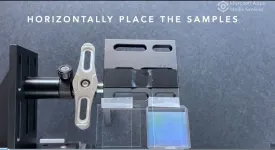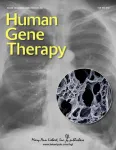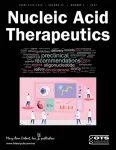(Press-News.org) In a new study, an international team of astrophysicists has discovered several mysterious objects hiding in images from the James Webb Space Telescope: six potential galaxies that emerged so early in the universe’s history and are so massive they should not be possible under current cosmological theory.
Each of the candidate galaxies may have existed at the dawn of the universe roughly 500 to 700 million years after the Big Bang, or more than 13 billion years ago. They’re also gigantic, containing almost as many stars as the modern-day Milky Way Galaxy.
“It’s bananas,” said Erica Nelson, co-author of the new research and assistant professor of astrophysics at the University of Colorado Boulder. “You just don’t expect the early universe to be able to organize itself that quickly. These galaxies should not have had time to form.”
Nelson and her colleagues, including first author Ivo Labbé of the Swinburne University of Technology in Australia, published their results Feb. 22 in the journal Nature.
The latest finds aren’t the earliest galaxies observed by James Webb, which launched in December 2021 and is the most powerful telescope ever sent into space. Last year, another team of scientists spotted four galaxies that likely coalesced from gas around 350 million years after the Big Bang. Those objects, however, were downright shrimpy compared to the new galaxies, containing many times less mass from stars.
The researchers still need more data to confirm that these galaxies are as big as they look, and date as far back in time. Their preliminary observations, however, offer a tantalizing taste of how James Webb could rewrite astronomy textbooks.
“Another possibility is that these things are a different kind of weird object, such as faint quasars, which would be just as interesting,” Nelson said.
Fuzzy dots
There’s a lot of excitement going around: Last year, Nelson and her colleagues, who hail from the United States, Australia, Denmark and Spain, formed an ad hoc team to investigate the data James Webb was sending back to Earth.
Their recent findings stem from the telescope’s Cosmic Evolution Early Release Science (CEERS) Survey. These images look deep into a patch of sky close to the Big Dipper—a relatively boring, at least at first glance, region of space that the Hubble Space Telescope first observed in the 1990s.
Nelson was peering at a postage stamp-sized section of one image when she spotted something strange: a few “fuzzy dots” of light that looked way too bright to be real.
“They were so red and so bright,” Nelson said. “We weren’t expecting to see them.”
She explained that in astronomy, red light usually equals old light. The universe, Nelson said, has been expanding since the dawn of time. As it expands, galaxies and other celestial objects move farther apart, and the light they emit stretches out—think of it like the cosmic equivalent of saltwater taffy. The more the light stretches, the redder it looks to human instruments. (Light from objects coming closer to Earth, in contrast, looks bluer).
The team ran calculations and discovered that their old galaxies were also huge, harboring tens to hundreds of billions of sun-sized stars worth of mass, on par with the Milky Way.
These primordial galaxies, however, probably didn’t have much in common with our own.
“The Milky Way forms about one to two new star every year,” Nelson said. “Some of these galaxies would have to be forming hundreds of new stars a year for the entire history of the universe.”
Nelson and her colleagues want to use James Webb to collect a lot more information about these mysterious objects, but they’ve seen enough already to pique their curiosity. For a start, calculations suggest there shouldn’t have been enough normal matter—the kind that makes up planets and human bodies—at that time to form so many stars so quickly.
“If even one of these galaxies is real, it will push against the limits of our understanding of cosmology,” Nelson said.
Seeing back in time
For Nelson, the new findings are a culmination of a journey that began when she was in elementary school. When she was 10, she wrote a report about Hubble, a telescope that launched in 1990 and is still active today. Nelson was hooked.
“It takes time for light to go from a galaxy to us, which means that you're looking back in time when you're looking at these objects,” she said. “I found that concept so mind blowing that I decided at that instant that this was what I wanted to do with my life.”
The fast pace of discovery with James Webb is a lot like those early days of Hubble, Nelson said. At the time, many scientists believed that galaxies didn’t begin forming until billions of years after the Big Bang. But researchers soon discovered that the early universe was much more complex and exciting than they could have imagined.
“Even though we learned our lesson already from Hubble, we still didn’t expect James Webb to see such mature galaxies existing so far back in time,” Nelson said. “I’m so excited.”
Other co-authors on the new study include Pieter van Dokkum of Yale University; Katherine Suess of the University of California, Santa Cruz; Joel Leja, Elijah Matthews and Bingjie Wang of the Pennsylvania State University; Gabriel Brammer and Katherine Whitaker of the University of Coppenhagen; and Mauro Stefanon of the University of Valencia.
END
James Webb spots super old, massive galaxies that shouldn’t exist
2023-02-22
ELSE PRESS RELEASES FROM THIS DATE:
Climate ‘spiral’ threatens land carbon stores – study
2023-02-22
The world’s forests are losing their ability to absorb carbon due to increasingly ‘unstable’ conditions caused by humans, a landmark study has found.
Dramatic changes to forests, and other habitats that store carbon in plants and soils, are becoming more likely in some regions across Earth, with less carbon consistently absorbed by the ‘land carbon sink’ provided by trees, soil and plants, according to scientists writing in Nature.
The short-term impacts of rising temperatures, ...
Anti-dust tech paves way for self-cleaning surfaces
2023-02-22
Dust is a common fact of life, and it's more than just a daily nuisance – it can get into machinery and equipment, causing loss of efficiency or breakdowns.
Researchers at The University of Texas at Austin partnered with North Carolina-based company Smart Material Solutions Inc. to develop a new method to keep dust from sticking to surfaces. The result is the ability to make many types of materials dust resistant, from spacecraft to solar panels to household windows.
The research is published in ACS Applied Materials & Interfaces.
"What we've ...
Today’s pediatric heart transplantations involve sicker children, but have better outcomes
2023-02-22
Key takeaways
Heart transplants offered to more patients with serious disease: A study of 323 pediatric heart transplants over 36 years at the University of Florida found that in recent years, more infants with serious congenital heart disease were offered heart transplants, but they had improved outcomes compared to patients in previous decades.
Improved long-term survival: Despite extending the procedure to younger patients with more serious heart problems, 5-year survival improved from 70.7% in previous years to 83% in recent ...
Deep earthquakes could reveal secrets of the Earth’s mantle
2023-02-22
A new study from a University of Chicago scientist suggests there may be a layer of surprisingly fluid rock ringing the Earth, at the very bottom of the upper mantle.
The finding was made by measuring the lingering movement registered by GPS sensors on islands in the wake of a deep earthquake in the Pacific Ocean near Fiji. Published Feb. 22 in Nature, the study demonstrates a new method to measure the fluidity of the Earth’s mantle.
“Even though the mantle makes up the largest part of Earth, there’s ...
Study offers details on using electric fields to tune thermal properties of ferroelectric materials
2023-02-22
New research from North Carolina State University sheds light on how electric fields can be used to alter the thermal properties of ferroelectric materials, allowing engineers to manipulate the flow of heat through the materials. Ferroelectric materials are used in a wide variety of applications, from ultrasound devices to memory storage technologies.
“Our work here is a significant advance because we worked with large sample sizes and provide detailed information on the relationship between the type of electric field being applied to the ferroelectric material and the thermal response in the material,” says Jun Liu, an associate professor of mechanical and aerospace ...
Second generation gene therapy for alpha 1-antitrypsin deficiency
2023-02-22
Researchers report on the safety of a gene therapy to treat the common autosomal recessive hereditary disorder alpha 1-antitrypsin (AAT) deficiency in a new article in the peer-reviewed journal Human Gene Therapy. Click here to read the article now.
In ATT deficiency, neutrophil proteases destroy the lung parenchyma, the portion of the lungs involved in gas exchange. The result is a high risk for the early onset of emphysema. Ronald Crystal, MD, from Weill Cornell Medicine, and coauthors, have developed an adeno-associated virus (AAV) serotype 8-based gene ...
Medical-legal partnerships are valued by immigrant, migrant populations
2023-02-22
(Boston)—Immigration status, immigration vulnerability and understanding of immigration-related legal options are critical components of safety, access to public benefits and wellness for many immigrants/migrants. While immigration status is increasingly recognized as an independent social determinant of health, understanding best practices for health care systems that might mitigate the health disparities that result from unequal health care access dictated by immigration status is just beginning to be studied.
In an effort to better understand best practices, researchers from Boston University ...
Terminal sterilization of oligonucleotide drug products
2023-02-22
A new report, coauthored by several major pharmaceutical companies, reviews the current state of sterile oligonucleotide drug product processing. The article, which provides recommendations to aid in the evaluation and development of terminal sterilization processes, is published in the peer-reviewed journal Nucleic Acid Therapeutics. Click here to read the article.
All marketed oligonucleotide products are delivered as sterile preparations for parenteral delivery. The two most common methods for sterilizing parenteral ...
Novel quantum entanglement lets researchers spy on atomic nuclei
2023-02-22
COLUMBUS, Ohio – Nuclear physicists have found a way to peer inside the deepest recesses of atomic nuclei, according to a new study.
The finding was made possible using the Relativistic Heavy Ion Collider (RHIC) at the Brookhaven National Laboratory in New York, which is capable of colliding gold ions at near light-speed. It led to the discovery of a new kind of quantum entanglement.
The term quantum entanglement describes an invisible link that connects distant objects; no matter how far away they are in space, they affect each ...
A new model offers an explanation for the huge variety of sizes of DNA in nature
2023-02-22
Why is "junk DNA" not deleted from the original genome over millions of years of evolution?
A new model offers an explanation for the huge variety of sizes of DNA in nature
Unlike "junk email" that is immediately deleted from the email box, "junk DNA" continues to exist in living creatures in nature such as bacteria, insects, and even mammals such as humans, alongside the original genome and thus the genome grows throughout evolution.
The researchers' explanation: the "junk DNA" hides in functional areas, thus deletions are likely to damage the functional ...



